 W
WKari Kustaa Alitalo is a Finnish MD and a medical researcher. He is a foreign associated member of the National Academy of Sciences of the US. He became famous for his discoveries of several receptor tyrosine kinases (RTKs) and the first growth factor capable of inducing lymphangiogenesis: vascular endothelial growth factor C (VEGF-C). In the years 1996–2007 he was Europe's second most cited author in the field of cell biology. Alitalo is currently serving as an Academy Professor for the Academy of Finland.
 W
WAleida Assmann is a German professor of English and Literary Studies, who studied Egyptology and whose work has focused on cultural anthropology and Cultural and Communicative Memory.
 W
WElizabeth Helen Blackburn, is an Australian-American Nobel laureate who is the former President of the Salk Institute for Biological Studies. Previously she was a biological researcher at the University of California, San Francisco, who studied the telomere, a structure at the end of chromosomes that protects the chromosome. In 1984, Blackburn co-discovered telomerase, the enzyme that replenishes the telomere, with Carol W. Greider. For this work, she was awarded the 2009 Nobel Prize in Physiology or Medicine, sharing it with Greider and Jack W. Szostak, becoming the first Australian woman Nobel laureate. She also worked in medical ethics, and was controversially dismissed from the Bush Administration's President's Council on Bioethics.
 W
WPeter Robert Lamont Brown is Rollins Professor of History Emeritus at Princeton University. He is credited with having brought coherence to the field of Late Antiquity, and is sometimes regarded as the inventor of the field. His work has concerned, in particular, the religious culture of the later Roman Empire and early medieval Europe, and the relation between religion and society.
 W
WThomas Robert Cech is an American chemist who shared the 1989 Nobel Prize in Chemistry with Sidney Altman, for their discovery of the catalytic properties of RNA. Cech discovered that RNA could itself cut strands of RNA, suggesting that life might have started as RNA. He also studied telomeres, and his lab discovered an enzyme, TERT, which is part of the process of restoring telomeres after they are shortened during cell division. As president of Howard Hughes Medical Institute, he promoted science education, and he teaches an undergraduate chemistry course at the University of Colorado.
 W
WBritton Chance was the Eldridge Reeves Johnson University Professor Emeritus of Biochemistry and Biophysics, as well as Professor Emeritus of Physical Chemistry and Radiological Physics at the University of Pennsylvania School of Medicine.
 W
WErwin Chargaff was an Austro-Hungarian-born American biochemist, writer, Bucovinian Jew who emigrated to the United States during the Nazi era, and professor of biochemistry at Columbia University medical school. He wrote a well-reviewed autobiography, Heraclitean Fire: Sketches from a Life Before Nature.
 W
WJohannes Carolus (Hans) Clevers is Principal Investigator at the Hubrecht Institute for Developmental Biology and Stem Cell Research (KNAW) and the Princess Máxima Center for Pediatric Oncology, Professor at Utrecht University and Oncode Investigator. Clevers was the first to identify living stem cells in the intestine and is one of the world's leading researchers on adult stem cells, their role in cancer and their potential for regenerative therapy.
 W
WChristian René Marie Joseph, Viscount de Duve was a Nobel Prize-winning Belgian cytologist and biochemist. He made serendipitous discoveries of two cell organelles, peroxisome and lysosome, for which he shared the Nobel Prize in Physiology or Medicine in 1974 with Albert Claude and George E. Palade. In addition to peroxisome and lysosome, he invented scientific names such as autophagy, endocytosis, and exocytosis in a single occasion.
 W
WStanislas Dehaene is a French author and cognitive neuroscientist whose research centers on a number of topics, including numerical cognition, the neural basis of reading and the neural correlates of consciousness. As of 2017, he is a professor at the Collège de France and, since 1989, the director of INSERM Unit 562, "Cognitive Neuroimaging".
 W
WSir Christopher Martin Dobson was a British chemist, who was the John Humphrey Plummer Professor of Chemical and Structural Biology in the Department of Chemistry at the University of Cambridge, and Master of St John's College, Cambridge.
 W
WJennifer Anne Doudna is an American biochemist who has done pioneering work in CRISPR gene editing, and made other fundamental contributions in biochemistry and genetics. She received the 2020 Nobel Prize in Chemistry, with Emmanuelle Charpentier, "for the development of a method for genome editing." She is the Li Ka Shing Chancellor's Chair Professor in the Department of Chemistry and the Department of Molecular and Cell Biology at the University of California, Berkeley. She has been an investigator with the Howard Hughes Medical Institute since 1997.
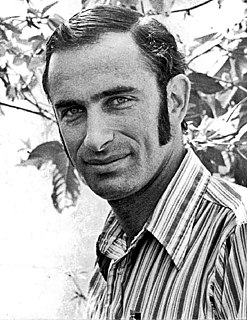 W
WPaul Ralph Ehrlich is an American biologist, best known for his warnings about the consequences of population growth and limited resources. He is the Bing Professor Emeritus of Population Studies of the Department of Biology of Stanford University and President of Stanford's Center for Conservation Biology.
 W
WAndrew Zachary Fire is an American biologist and professor of pathology and of genetics at the Stanford University School of Medicine. He was awarded the 2006 Nobel Prize for Physiology or Medicine, along with Craig C. Mello, for the discovery of RNA interference (RNAi). This research was conducted at the Carnegie Institution of Washington and published in 1998.
 W
WPeter Joachim Gay was a German-American historian, educator, and author. He was a Sterling Professor of History at Yale University and former director of the New York Public Library's Center for Scholars and Writers (1997–2003). Gay received the American Historical Association's (AHA) Award for Scholarly Distinction in 2004. He authored over 25 books, including The Enlightenment: An Interpretation, a two-volume award winner; Weimar Culture: The Outsider as Insider (1968), a bestseller; and the widely translated Freud: A Life for Our Time (1988).
 W
WPaul David Neil Hebert is a Canadian biologist. He is founder and director of the Centre for Biodiversity Genomics at the University of Guelph in Ontario, Canada. He applied the technique invented by Carl Woese and colleagues in the 1980s to arthropods and called it DNA barcoding.
 W
WJudith Herrin is a British archaeologist and academic of Late Antiquity. She was Professor of Late Antique and Byzantine Studies and Constantine Leventis Senior Research Fellow at King's College London.
 W
WStephen Philip Jackson, FRS, FMedSci, is the Frederick James Quick Professor of Biology. He is a Senior Group Leader and Head of Cancer Research UK Laboratories at the Gurdon Institute.
 W
WSir Alec John Jeffreys, is a British geneticist known for developing techniques for genetic fingerprinting and DNA profiling which are now used worldwide in forensic science to assist police detective work and to resolve paternity and immigration disputes. He is Professor of Genetics at the University of Leicester, and he became an honorary freeman of the City of Leicester on 26 November 1992. In 1994, he was knighted for services to genetics.
 W
WBéla Julesz was a Hungarian-born American visual neuroscientist and experimental psychologist in the fields of visual and auditory perception.
 W
WEric Richard Kandel is an Austrian-born American medical doctor who specialized in psychiatry, a neuroscientist and a professor of biochemistry and biophysics at the College of Physicians and Surgeons at Columbia University. He was a recipient of the 2000 Nobel Prize in Physiology or Medicine for his research on the physiological basis of memory storage in neurons. He shared the prize with Arvid Carlsson and Paul Greengard.
 W
WMary-Claire King is an American geneticist. She was the first to show that breast cancer can be inherited due to mutations in the gene she called BRCA1. She studies human genetics and is particularly interested in genetic heterogeneity and complex traits. She studies the interaction of genetics and environmental influences and their effects on human conditions such as breast and ovarian cancer, inherited deafness, schizophrenia, HIV, systemic lupus erythematosus and rheumatoid arthritis. She has been the American Cancer Society Professor of the Department of Genome Sciences and of Medical Genetics in the Department of Medicine at the University of Washington since 1995.
 W
WSir Aaron Klug was a Lithuanian-born British biophysicist and chemist. He was a winner of the 1982 Nobel Prize in Chemistry for his development of crystallographic electron microscopy and his structural elucidation of biologically important nucleic acid-protein complexes.
 W
WTitia de Lange is the Director of the Anderson Center for Cancer Research, the Leon Hess professor and the head of Laboratory Cell Biology and Genetics at Rockefeller University.
 W
WWilliam F. Laurance, also known as Bill Laurance, is Distinguished Research Professor at James Cook University, Australia and has been elected as a Fellow of the Australian Academy of Science. He has received an Australian Laureate Fellowship from the Australian Research Council. He held the Prince Bernhard Chair for International Nature Conservation at Utrecht University, Netherlands from 2010 to 2014.
 W
WPaul Christian Lauterbur was an American chemist who shared the Nobel Prize in Physiology or Medicine in 2003 with Peter Mansfield for his work which made the development of magnetic resonance imaging (MRI) possible.
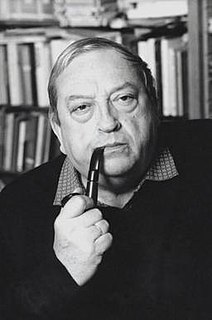 W
WJacques Le Goff was a French historian and prolific author specializing in the Middle Ages, particularly the 12th and 13th centuries.
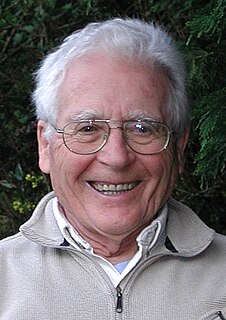 W
WJames Ephraim Lovelock is a British independent scientist, environmentalist and futurist. He is best known for proposing the Gaia hypothesis, which postulates that the Earth functions as a self-regulating system.
 W
WDame Georgina Mary Mace, was a British ecologist and conservation scientist. She was Professor of Biodiversity and Ecosystems at University College London, and previously Professor of Conservation Science and Director of the Natural Environment Research Council (NERC) Centre for Population Biology, Imperial College London (2006–2012) and Director of Science at the Zoological Society of London (2000–2006).
 W
WMark Manders is a Dutch artist. He first studied graphic design; but, then changed his mind and decided to be a writer but with objects instead of words. Therein he became very interested in the paralleled evolution of humans and objects.
 W
WBarry James Marshall is an Australian physician, Nobel Prize Laureate in Physiology or Medicine, Professor of Clinical Microbiology and Co-Director of the Marshall Centre at the University of Western Australia. Marshall and Robin Warren showed that the bacterium Helicobacter pylori plays a major role in causing many peptic ulcers, challenging decades of medical doctrine holding that ulcers were caused primarily by stress, spicy foods, and too much acid. This discovery has allowed for a breakthrough in understanding a causative link between Helicobacter pylori infection and stomach cancer.
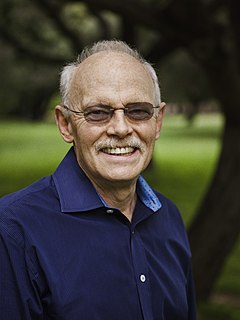 W
WJames Lloyd "Jay" McClelland, FBA is the Lucie Stern Professor at Stanford University, where he was formerly the chair of the Psychology Department. He is best known for his work on statistical learning and Parallel Distributed Processing, applying connectionist models to explain cognitive phenomena such as spoken word recognition and visual word recognition. McClelland is to a large extent responsible for the large increase in scientific interest in connectionism in the 1980s.
 W
WJoel Mokyr is a Netherlands-born American-Israeli economic historian. He is a professor of economics and history at Northwestern University, where he has taught since 1974; in 1994 he was named the Robert H. Strotz Professor of Arts and Sciences. He is also a Sackler Professorial Fellow at the University of Tel Aviv's Eitan Berglas School of Economics.
 W
WSir Salvador Moncada, FRS, FRCP, FMedSci is a Honduran-British pharmacologist and professor. He is currently Research Domain Director for Cancer at the University of Manchester.
 W
WLuc Montagnier is a French virologist and joint recipient, with Françoise Barré-Sinoussi and Harald zur Hausen, of the 2008 Nobel Prize in Physiology or Medicine for his discovery of the human immunodeficiency virus (HIV). He has worked as a researcher at the Pasteur Institute in Paris and as a full-time professor at Shanghai Jiao Tong University in China.
 W
WSir Paul Maxime Nurse, is an English geneticist, former President of the Royal Society and Chief Executive and Director of the Francis Crick Institute. He was awarded the 2001 Nobel Prize in Physiology or Medicine along with Leland Hartwell and Tim Hunt for their discoveries of protein molecules that control the division of cells in the cell cycle.
 W
WAnthony James Pawson was a British-born Canadian scientist whose research revolutionised the understanding of signal transduction, the molecular mechanisms by which cells respond to external cues, and how they communicate with each other. He identified the phosphotyrosine-binding Src homology 2 as the prototypic non-catalytic interaction module. SH2 domains serve as a model for a large family of protein modules that act together to control many aspects of cellular signalling. Since the discovery of SH2 domains, hundreds of different modules have been identified in many proteins.
 W
WWerner E. Reichardt was a German physicist and biologist who helped to establish the field of biological cybernetics. He co-founded the Max Planck Institute for Biological Cybernetics, and the Journal of Biological Cybernetics.
 W
WMatthijs Nicolaas Röling is a Dutch painter, active as graphic designer, wall painter, painter, draftsman, lithographer, pen artist, etcher, and academy lecturer. He is considered a kindred spirit of the 3rd generation of the Dutch Group of figurative abstraction. Röling is described as the "figurehead of contemporary figurative painting in the Netherlands."
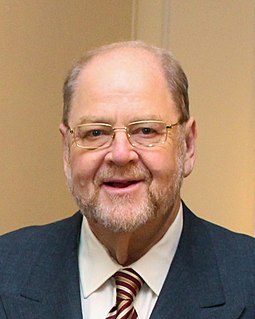 W
WJames Edward Rothman, son of Haverhill MA pediatrician Martin Rothman and Gloria Hartnick of Tulsa OK, is an American biochemist. He is the Fergus F. Wallace Professor of Biomedical Sciences at Yale University, the Chairman of the Department of Cell Biology at Yale School of Medicine, and the Director of the Nanobiology Institute at the Yale West Campus. Rothman also concurrently serves as adjunct professor of physiology and cellular biophysics at Columbia University and a research professor at the UCL Queen Square Institute of Neurology, University College London. Rothman was awarded the 2013 Nobel Prize in Physiology or Medicine, for his work on vesicle trafficking. He received many other honors including the King Faisal International Prize in 1996, the Louisa Gross Horwitz Prize from Columbia University and the Albert Lasker Award for Basic Medical Research both in 2002.
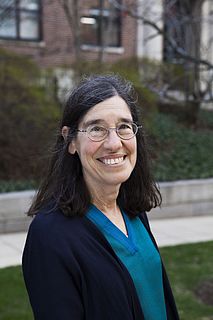 W
WElizabeth Shilin Spelke FBA is an American cognitive psychologist at the Department of Psychology of Harvard University and director of the Laboratory for Developmental Studies.
 W
WRalph Marvin Steinman was a Canadian physician and medical researcher at Rockefeller University, who in 1973 discovered and named dendritic cells while working as a postdoctoral fellow in the laboratory of Zanvil A. Cohn, also at Rockefeller University. Steinman was one of the recipients of the 2011 Nobel Prize in Physiology or Medicine.
 W
WPeter Struycken is a Dutch artist, and the brother of actor Carel Struycken. He won the 2012 Heineken Prize for Arts from the Royal Netherlands Academy of Arts and Sciences.
 W
WJack William Szostak is a Canadian American biologist of Polish British descent, Nobel Prize laureate, Professor of Genetics at Harvard Medical School, and Alexander Rich Distinguished Investigator at Massachusetts General Hospital, Boston. Szostak has made significant contributions to the field of genetics. His achievement helped scientists to map the location of genes in mammals and to develop techniques for manipulating genes. His research findings in this area are also instrumental to the Human Genome Project. He was awarded the 2009 Nobel Prize for Physiology or Medicine, along with Elizabeth Blackburn and Carol W. Greider, for the discovery of how chromosomes are protected by telomeres.
 W
WLonnie Thompson, is an American paleoclimatologist and Distinguished University Professor in the School of Earth Sciences at The Ohio State University. He has achieved global recognition for his drilling and analysis of ice cores from ice caps and mountain glaciers in the tropical and sub-tropical regions of the world. He and his wife, Ellen Mosley-Thompson, run the ice core paleoclimatology research group at the Byrd Polar Research Center.
 W
WGeorge David Tilman, ForMemRS, is an American ecologist. He is Regents Professor and McKnight Presidential Chair in Ecology at the University of Minnesota, as well as an instructor in Conservation Biology; Ecology, Evolution, and Behavior; and Microbial Ecology. He is director of the Cedar Creek Ecosystem Science Reserve long-term ecological research station. Tilman is also a professor at University of California, Santa Barbara's Bren School of Environmental Science & Management.
 W
WRoger Yonchien Tsien was an American biochemist. He was a professor of chemistry and biochemistry at the University of California, San Diego and was awarded the Nobel Prize in Chemistry for his discovery and development of the green fluorescent protein, in collaboration with organic chemist Osamu Shimomura and neurobiologist Martin Chalfie. Tsien was also a pioneer of calcium imaging.
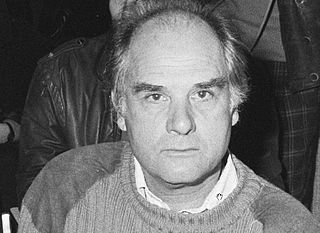 W
WCarel Nicolaas Visser was a Dutch sculptor. He is considered an important representative of Dutch abstract-minimalist constructivism in sculpture.
 W
WCharles Weissmann is a Hungarian-born Swiss molecular biologist. Weissmann is particularly known for the first cloning and expression of interferon and his contributions to the unraveling of the molecular genetics of neurogenerative prion diseases such as scrapie, Creutzfeldt–Jakob disease and "mad cow disease".
 W
WDavid de Wied was a Dutch professor of pharmacology at the University of Utrecht.